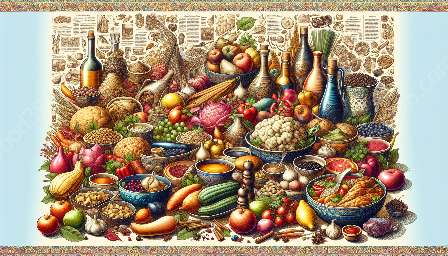Early food cultures faced significant environmental challenges and limited resources, which necessitated adaptive strategies for survival. These challenges played a crucial role in shaping early agricultural practices and the development of food cultures. To understand the origin and evolution of food culture in diverse environments, it is essential to explore how early human societies adapted to these challenges.
Early Agricultural Practices and Environmental Adaptations
The transition from hunting and gathering to agriculture marked a pivotal shift in human history. Early agricultural practices emerged as a response to environmental challenges such as fluctuating climate, soil fertility, and access to water sources. In regions with limited resources, innovative farming techniques and crop selection became essential for sustaining food production.
In arid environments, early food cultures developed sophisticated irrigation systems to maximize water usage and cultivate crops in an otherwise inhospitable landscape. Additionally, the domestication of drought-resistant crops and the utilization of diverse plant species contributed to the resilience of early agricultural systems.
Furthermore, the development of terraced farming allowed communities to cultivate steep slopes and hillsides, effectively expanding arable land and mitigating the impact of soil erosion. These adaptive agricultural practices not only addressed environmental challenges but also contributed to the formation of distinct food cultures with unique culinary traditions.
Food Culture Development and Resource Scarcity
Resource scarcity played a defining role in shaping early food cultures, prompting innovative methods for food preservation, storage, and utilization. In regions where access to fresh produce was limited, early societies developed techniques such as fermentation, drying, and pickling to extend the shelf life of food and minimize waste.
The preservation of food through fermentation not only provided sustenance during lean periods but also gave rise to a rich array of traditional fermented foods integral to various food cultures. Moreover, the utilization of all parts of an animal or plant, including offal and foraged ingredients, reflected the resourcefulness of these early food cultures.
As food preservation techniques evolved, so did the culinary practices and dietary habits of early societies. The scarcity of certain food items led to the prioritization of locally available resources, resulting in the development of region-specific cuisines and culinary traditions.
The Origin and Evolution of Food Culture
The origin and evolution of food culture are deeply intertwined with the environmental context in which early human societies thrived. It is evident that the adaptation to environmental challenges and limited resources played a pivotal role in shaping the diverse food cultures that emerged across different geographical regions.
Exploring the archaeological evidence of early food remains, including ancient cooking tools, pottery, and food remnants, provides insights into the dietary practices and food preferences of early cultures. This archaeological record offers a glimpse into the innovative methods employed to overcome environmental constraints and sustain food production.
As early agricultural practices evolved, so too did the culinary traditions and cultural practices associated with food. The exchange of culinary knowledge and food-related rituals among diverse communities further enriched the tapestry of food culture, leading to the fusion of flavors, techniques, and ingredients.
Moreover, the migration of human populations and the exchange of crops and foodstuffs facilitated the cross-pollination of food cultures, contributing to the diversity and adaptability of culinary traditions around the world.
Conclusion
Early food cultures navigated environmental challenges and limited resources through innovative agricultural practices, food preservation techniques, and the development of distinct culinary traditions. The interplay between environmental adaptation and food culture development underscores the resilience and creativity of early human societies in securing sustenance and shaping the culinary landscape. Understanding the origin and evolution of food culture in diverse environments provides a holistic view of human history and the intricate relationship between food, environment, and culture.


